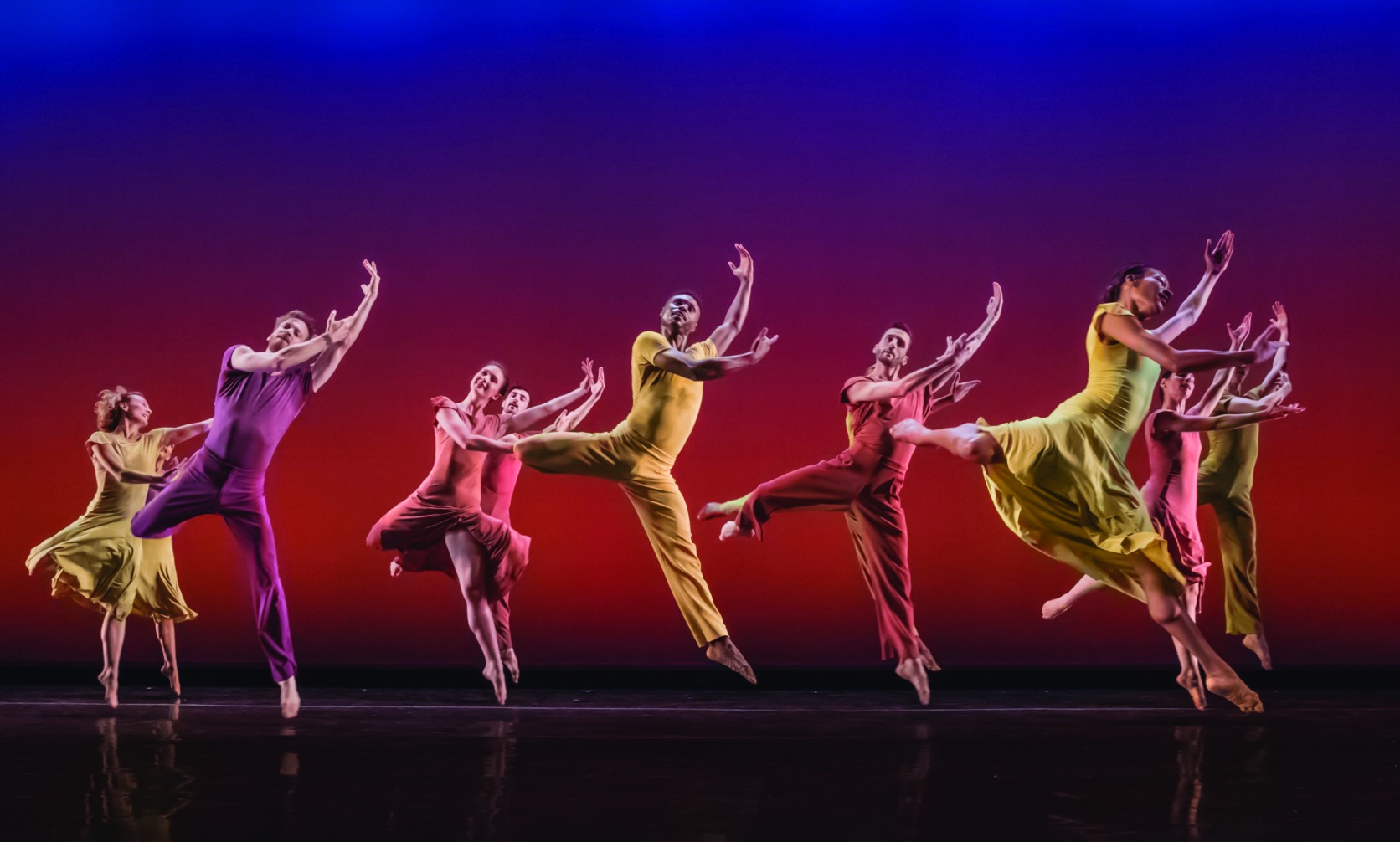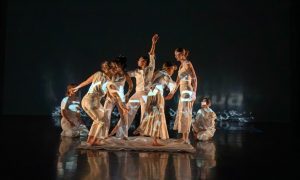There’s a tension in the concert dance world at large — between the classic and the contemporary, the traditional and the modern. At the same time, there can be confluence and harmony there. Colin Connor, artistic director of the José Limón Dance Company, embraces all of that complexity. He seeks to bring the old and new together in order to honor the legacy of dance, but also make the the art form truly resonate in the modern day, he shares. Dance Informa speaks with Connor about presenting work at The Joyce Theater, seeking out exciting new artists, balancing executive and creative responsibilities, and more.
Formerly a dancer with the company, then rehearsal director, Connor stepped into the role of artistic director in 2016. He leads a company of 73 years, a seminal force in modern concert dance. Connor is clear that his primary goal in this work is to make “Limón’s classic works vibrant today.” It’s also very important to him that dancers have the freedom to feel like they’re truly recreating these works, not just reviving them — in other words, truly applying the unique signature of their own artistry. The company’s upcoming program at The Joyce Theater, which Connor calls a “wonderful space”, reflects this mixing of the old and the new.
It begins with The Weather in the Room, choreographed by Connor himself. The work contains what he says truly interests him, “all those things that get us out of our ‘boxes’.” For instance, the score helps create a compelling atmosphere for the piece. The work illustrates the everyday dynamics between an older couple, and through that reveals the beauty within the quotidian. “Every long-standing couple knows that the weather in the room changes,” Connor asserts, referencing the mental and emotional dynamics that can shift and change between two people who love each other.
He believes that there is so much richness and beauty to be found in these shifts and changes, those which live within day-to-day experiences. Similarly, he feels that the piece allows the dancers to show the magic within the body, that to which dancers are attuned but is just ordinary experience to most everyone else. While it’s certainly challenging for Connor to continue making work while acting as artistic director (including executive responsibilities with the company, school and community outreach initiatives), he’s quite sure that he wants to continue doing so, he shares. “The desire to make work is a disease,” he says with a bit of a chuckle.
Following The Weather in the Room will be The Moor’s Pavane, a seminal work in the Limón cannon. It demonstrates Limón’s commitment to connecting the old and the new, that which Connor carries on. Limón, as a Mexican-American immigrant, faced subtle racism and generally being held as “the other”. The story of Othello (a classic Shakespearean play) is a similar tale, with racism and general distrust for being “other” fueling suspicion that Othello was engaging in adultery. Connor underscores how these themes are quite applicable in 2019. All considered, Connor also asserts that the presenting of this work now — and even the work itself, regardless of when performed — has many layers of meaning. The best art does, he agrees. The best art also illustrates “the game between the public and the private, the formal and the informal,” Connor contends; a story presented in the formality of a dark theater can display something much more intimate, and also comment upon the same in the lives of audience members.
Opening the second act will be Francesca Harper’s Radical Beasts in the Forest of Possibilities, a work focusing on the “experience of living in digital times, the urgency we feel to keep up with everything, and our partial ability to be here now,” Connor explains. He also shares how the score is a compelling “techno soundstage.” As for the movement, there is much structured improvisation. Connor asserts that the dancers truly “carry themselves differently” executing this structured improvisation, as compared to when they are doing set work.
To the question of how Harper presenting work danced by the José Limón Dance Company came to be, Connor describes how he’s always looking out for artists with fresh perspectives and creations — those who are also in harmony with the work of the company and organization at large. He saw Harper’s work in a downtown New York City venue, connected with her further, and determined that she’s that kind of artist. “She’s got a really strong sense of emotional life,” Connor says.
Closing out the program will be another well-known Limón work, Psalms. Connor explains how he’s edited the work, which will also be set to newly commissioned music. It demonstrates how “in a lot of dance you see dancers move in the space, but in Limon work, you see them moving the space,” Colin says. The work tells the story of one person carrying the suffering of all others onstage. It also illustrates human triumph over death, and is harmoniously organized, Connor says. “There’s a huge contrast between the luscious, smooth movement of the group and the pathos of the soloist,” he shares.
Connor describes how Limón saw himself as an outsider, but longed for and appreciated community. The felt rhythm of breath and heartbeat is incredibly strong in Limón’s work, getting at the empathy of audience members, he adds. As Connor points out, the digital world didn’t exist when Limón was creating, yet we may need that sense of shared feeling and understanding more than ever. Connor, for his part, is working to preserve the treasures of the past while making them truly resonate in the world of today.
Go here for more information on the program at The Joyce Theater and to purchase tickets.
By Kathryn Boland of Dance Informa.















